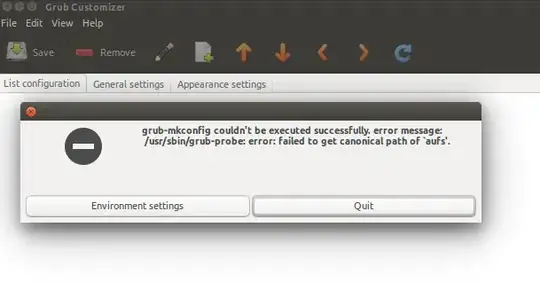I am running ubuntu 16.04 live usb persistent.
when I type this command - sudo update-grub
I get this error- /usr/sbin/grub-probe: error: failed to get canonical path of aufs'.
I found a work around buy applying these commands and the error no longer occur.-
sudo apt-get update;
sudo apt-get install grub
(it actually installs grub 0.9)
But I need to edit grub.cfg and in it's not present in grub(0.9). It's in grub(2.0 latest) instead.
THEN
If I install grub(2.0), I suffer with this problem again - /usr/sbin/grub-probe: error: failed to get canonical path of aufs'.
WHAT should I do next to resolve this?
My previous question and how I get here-
How do I add a kernel boot parameter on live session itself?
Make boot parameters permanent on live session itself?
Ubuntu is not booting up with desired parameter?
missing grub.cfg file instead have menu.lst on ubuntu 16.04
EDIT- same error while using 'grub customizer'-
EDIT -
Creating boot summary info through boot-repair:-

EDIT- BOOT INFO:-
